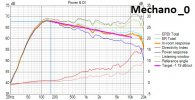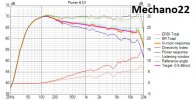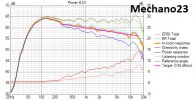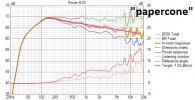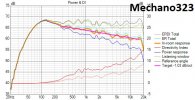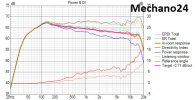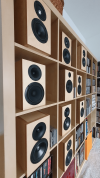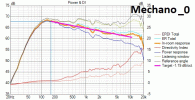Asymmetrical driver placement has always seemed visually unappealing to me, but I tried it in my previous (3-way) design and noticed some advantages. So I used this approach again, this time with a 2-way design, and… omg, what an eyesore. What do I to do with it? Maybe a little manipulation of the picture frame, moving the units away from the camera, bringing curves and slopes of the stands to the foreground, a bit of overexposure... ok, here they are.
Mechano24:

Enclosure dimensions: HxWxD: 290x174x263mm, polyester fiber filling.
18mm birch plywood, front panel glued "on top".

Rear panel flushed into the enclosure.
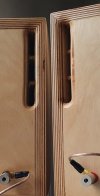
Bass reflex 8l, 45Hz. BR tunnel made of a piece of HDF glued on slats.
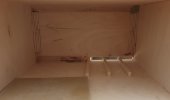
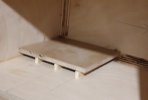
Crossovers assembled on a plywood scrap, attached with screws on an anti-vibration pad to the rear panel (installation through the woofer mounting hole).
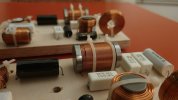
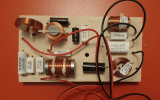
Crossover schematic and the characteristics (rating 6.78/EQ9 6.133/EQ10)

THD measurements: ~1.4% peak at 2kHz (87dB/1m)

The design is based on ScanSpeak drivers:
Mechano24:
Enclosure dimensions: HxWxD: 290x174x263mm, polyester fiber filling.
18mm birch plywood, front panel glued "on top".

Rear panel flushed into the enclosure.

Bass reflex 8l, 45Hz. BR tunnel made of a piece of HDF glued on slats.


Crossovers assembled on a plywood scrap, attached with screws on an anti-vibration pad to the rear panel (installation through the woofer mounting hole).


Crossover schematic and the characteristics (rating 6.78/EQ9 6.133/EQ10)

THD measurements: ~1.4% peak at 2kHz (87dB/1m)

The design is based on ScanSpeak drivers:
Attachments
Last edited:


